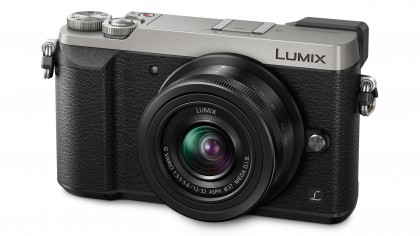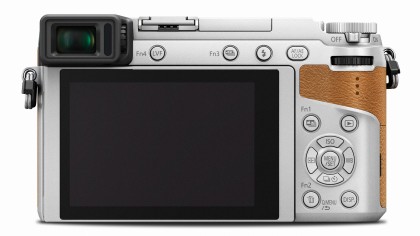TechRadar Verdict
Although the price may seem a little on the high side compared with competing cameras like the X-T10, the GX80 is a strong proposition that offers the ability to shoot 8MP images at 30 frames per second as well as touch-control.
Pros
- +
Excellent image quality
- +
Great set of features, including 4K video/photo modes
- +
Consistent and accurate AF performance
Cons
- -
Ergonomics not as good as some rivals
- -
No minimum shutter speed option for Auto ISO
- -
Only 16MP compared to the 20MP of the GX8
Why you can trust TechRadar
The Panasonic GX80/GX85 (it's the former in the UK and the latter in the US and Australia) was launched in early April 2016, and like the bigger and more highly specified GX8 has a rangefinder-style body. It's a fairly compact size, but feels solid and well made.
Rather surprisingly, the sensor has only 16MP compared to the 20MP of the GX8. However, Panasonic has opted not to include an anti-aliasing (AA) filter in the GX80, meaning those 16 million pixels should be capable of capturing more detail than normal.
Panasonic has also reworked the processing engine found in the GX8 to negate the potential for moire patterning occurring as a result of there being no AA filter.
Now that the GX80/85 has been around for some time, it's one of the best cheap cameras you can buy right now.

The GX80 lacks the tilting viewfinder of the GX8, presumably to keep both size and cost down, but does boast a very bright and detailed EVF. It has an impressive 2,764,000-dot resolution, compared to the 2,360,000 dots of the GX8, and its rear LCD shares the same 3-inch high-res 1,040,000-dot touch screen technology, although it's tilting rather than fully articulated.
It also has many of the same features as its larger sibling, including the increasingly popular 4K video and photo modes. This means you can film in 4K quality at 30 frames per second (fps), and also extract the best still image from within this sequence as an 8MP file.
The GX80 also benefits from Panasonic's 5-Axis Dual IS, first introduced with the GX8. This is an improved dual stabilisation system that works for both video and stills. It works across five axes (all five corrections are applied in-camera, and two are also applied in-lens, with the camera deferring to those as necessary), and means you can achieve a greater degree of stabilisation, with sensor and lens working in harmony to provide maximum shake correction.
Sign up for breaking news, reviews, opinion, top tech deals, and more.

Panasonic's Depth from Defocus (DFD) technology is included, and operates when Panasonic's own lenses are used; with third-party lenses the GX80 uses contrast detect autofocus (AF). Panasonic has made much of its new Post Focus technology, which is also included in the GX80 – this enables you to shoot a series of still images, with the camera automatically varying the focus point between the frames, enabling you to choose the image with the desired focus point by touching that point on the rear screen.
The usual choice of autofocus options are available: single autofocus (AFS), flexible autofocus (AFF), continuous autofocus (AFC) and manual focus (MF). The latter works by using manual focus assist, with picture in picture (PIP) or full-screen magnification, as well as by utilising focus peaking.
You're spoilt for choice when it comes to autofocus modes, with no less than six on offer: Face/eye detection, Tracking, 49 area, Custom Multi, 1-Area and Pinpoint. You can also use the touch-sensitive screen for focusing, including while looking through the EVF – a welcome feature that we've seen in many of Panasonic's recent cameras.

Sensitivity ranges from ISO200 (extendable down to 100) to 25,600, with auto and intelligent ISO enabling you to set an upper limit of ISO400 to 25,600. Disappointingly, though, there's no option to choose a minimum shutter speed, which somewhat limits the usefulness of the auto ISO option.
As well as the usual full manual and semi/automatic controls, the GX80 offers intelligent auto and three programmable custom modes. There are also 24 scene-based modes and 22 creative filter options, along with panoramic, multiple exposure, stop motion animation and time-lapse.
Multi, centre-weighted and spot metering are all available, along with exposure bracketing by up to three stops, over up to seven frames. Exposure compensation can be adjusted by plus or minus three stops, in 1/3 stop increments. Wi-Fi functionality is included and enables remote operation, playback and image transfer through your smartphone/tablet, using Panasonic's image app.
There's no doubt the GX80 is an extremely well-specified camera, and, priced at £509/$700/AU$1,100 for the body only or £599/$797/AU$1,200 with an optional 12-32mm kit lens it offers very good value for money, particularly when you consider its 4K video modes and excellent EVF. But exactly where the GX80 fits into what is a crowded marketplace isn't so obvious.